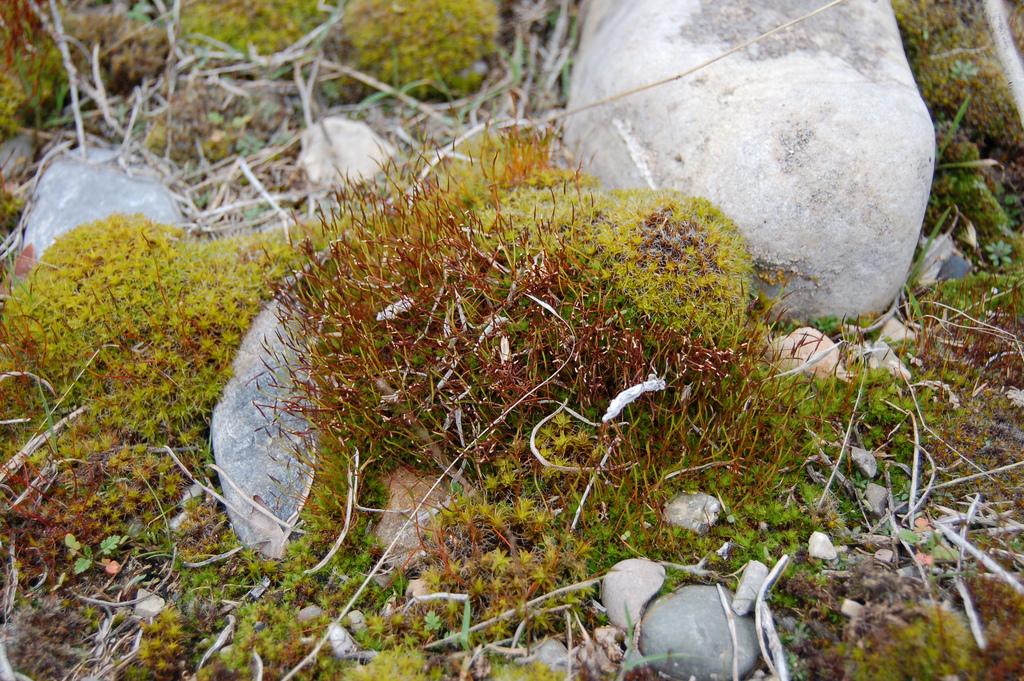Syntrichia
|
Family: Pottiaceae |
Plants small to large tufts, green to yellow- or red-brown. Stems simple or forked, epidermal cells differentiated in 1-3 layers, central strand usually present. Leaves appressed and variously twisted when dry, erect-spreading to squarrose when moist, obovate, spatulate, or lingulate, rarely broadly oblong-lanceolate; margins plane or revolute, usually entire; apices acute to truncate or emarginate, and often apiculate; costa generally strong, percurrent to long-excurrent as a hyaline or colored awn, usually rounded abaxailly, in section showing 1 median layer of large guide cells, 1-3 layers of smaller adaxial cells, a weak or strong abaxial stereid band, and sometimes a group of hydroids, but no abaxial epidermis of larger cells; basal cells abruptly differentiated, large and rectangular, smooth, hyaline, thin-walled, often lax; distal cells quadrate or sometimes slightly longer than wide, small and obscure to large and lax, usually pluripapillose on both surfaces, rarely 1-papillose only on the abaxial surface; marginal cells sometimes differentiated, thicker-walled and colored or pale. Specialized asexual reproduction often present, propagula borne on the lamina or costa, in leaf axils, or on rhizoids, in shape leaflike, spherical, or cylindric. Sexual condition dioicous, autoicous, or synoicous; perigonial bracts often short, ovate or oblong-lingulate, blunt, with costa often ending before the apex, perichaetia terminal, the bracts not differentiated. Seta red or brown, elongate, smooth. Capsule erect, straight or slightly curved, red or brown, cylindric, sometimes with a distinct neck, usually striolate when dry; operculum conic, straight or slightly oblique, shorter than the urn; peristome consisting of 32 filiform, reddish, papillose divisions slightly to strongly twisted together above a pale, tessellated basal membrane 1/6-2/3 the total length of the peristome. Calyptra long-cucullate, acute, yellow or brown. Spores finely to strongly papillose. KOH laminal color reaction brick-red. Syntrichia appears to be a monophyletic group, segregated from Tortula by synapomorphic leaf characters, in particular the large basal cells abruptly differentiated from the small distal cells, usually forming an inverted U-shaped group on each side of the costa. Also, the costal cross section of Syntrichia lacks an abaxial epidermis, unlike the case in Tortula. The high basal membrane of the peristome, while responsible for the name of the genus, is not diagnostic for Syntrichia since an equally high basal membrane has evolved in Tortula as well.
|

